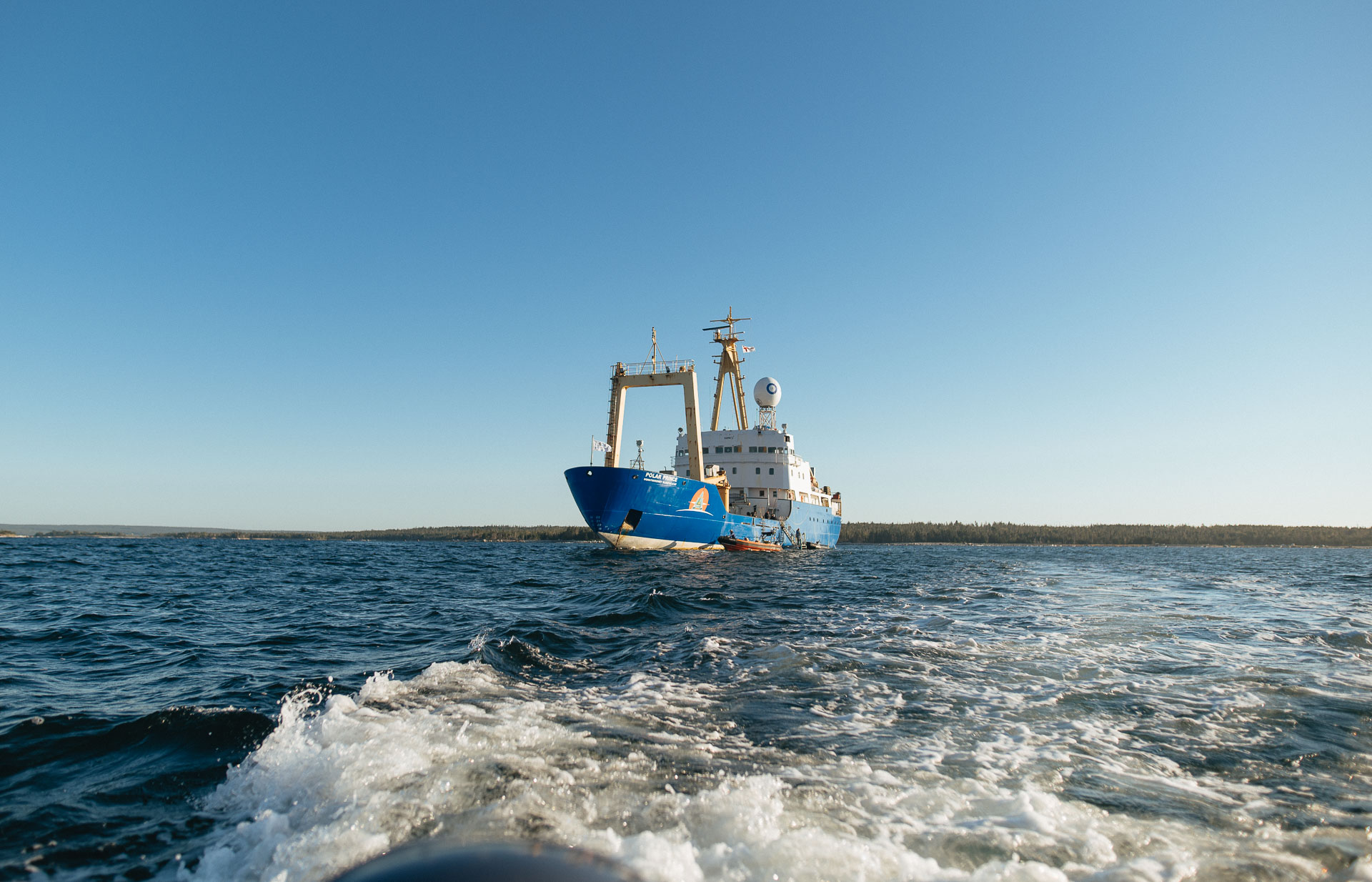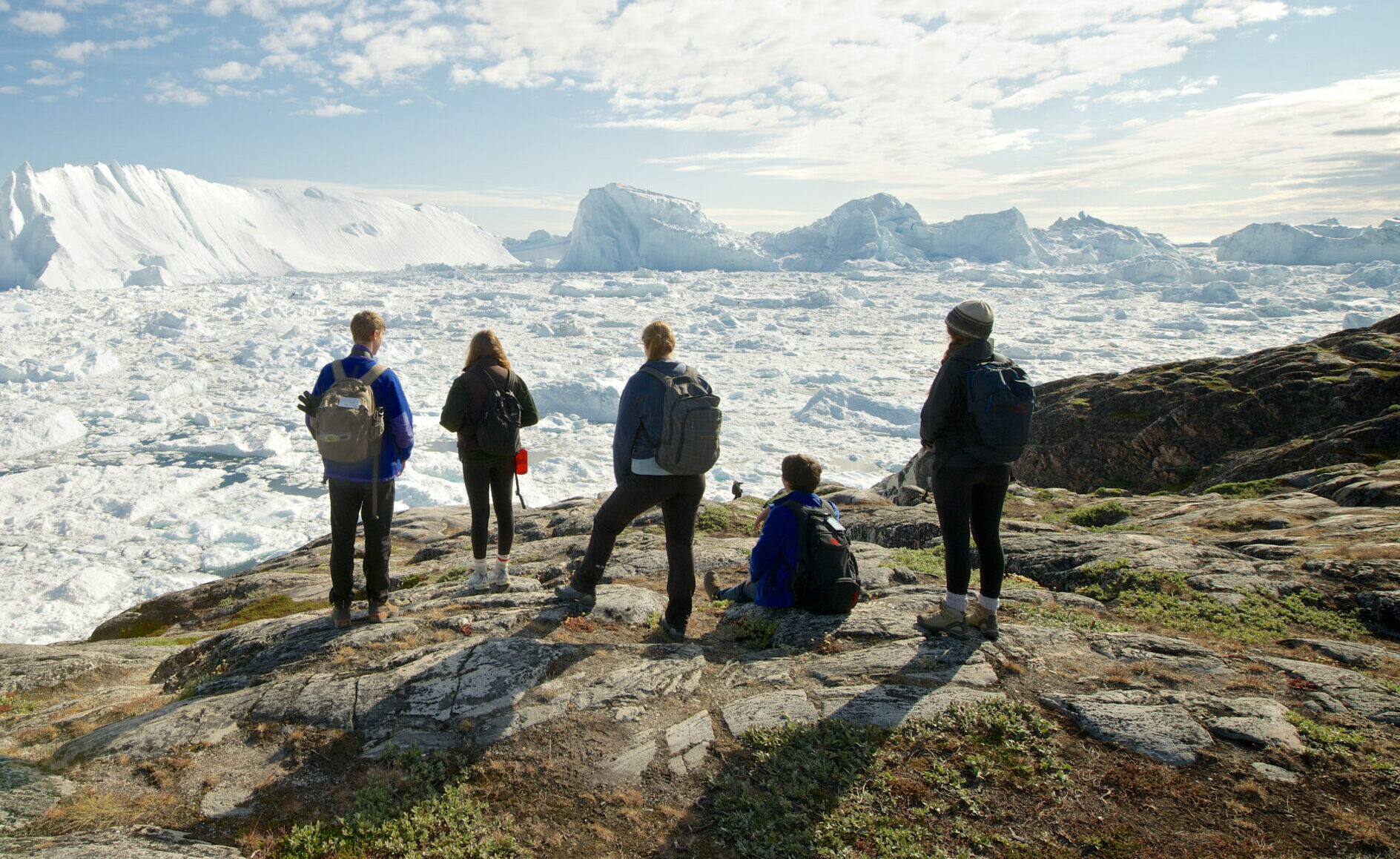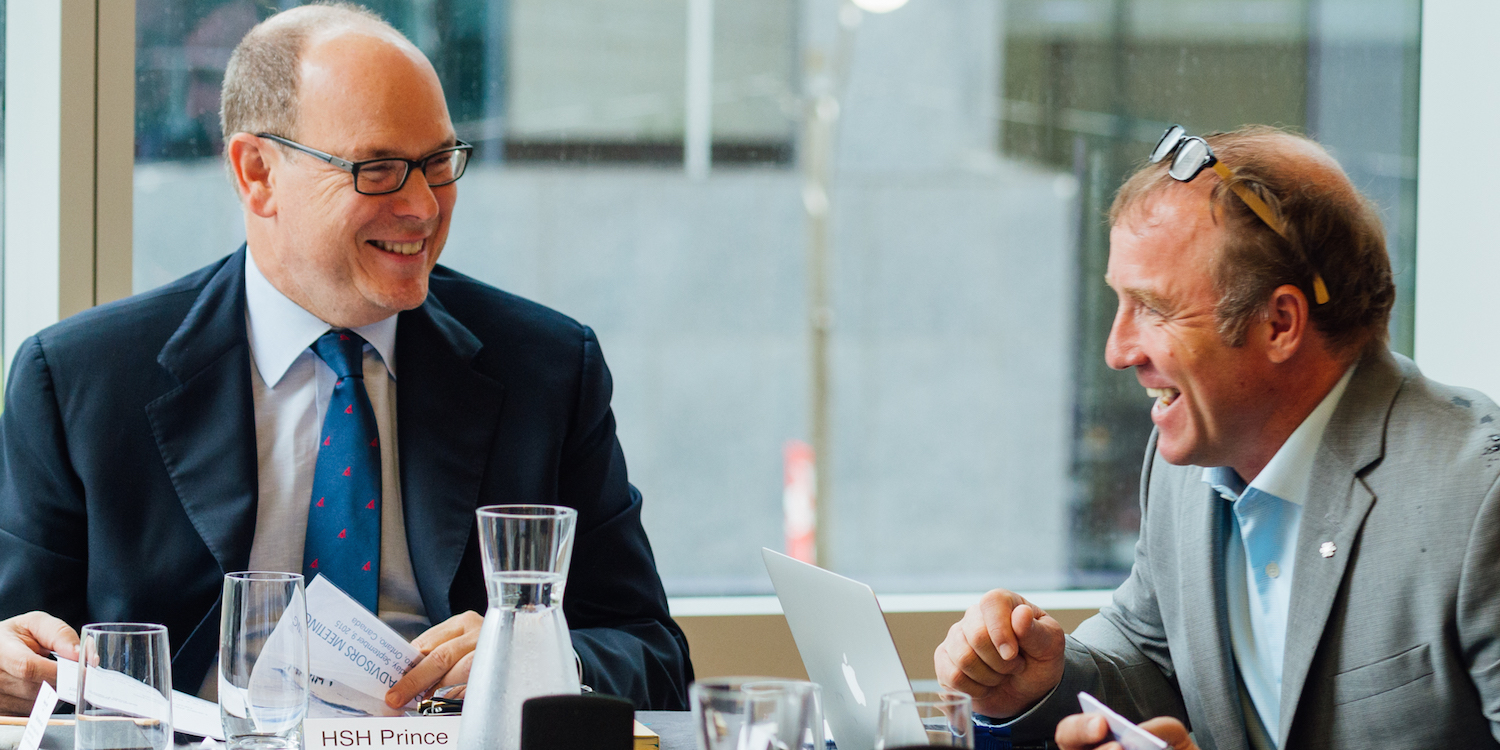Frequently Asked Questions
What is the SOI (Students on Ice) Foundation?
The SOI Foundation (rebranded in 2021!) is an award-winning organization that takes high school and university students (although please note, the youth do not need to be in formal education to apply/attend) from around the world on educational expeditions to the Arctic, Antarctic and many places in between. SOI is founded on the principle that we are driven by the personal connections that we make to the land and to one another and these connections foster a deeper understanding of and commitment to a healthy and sustainable future. Experiential education in the Polar Regions is SOI’s core program. Today, SOI has a network of over 3,000 alumni from 52 countries who are making a difference on a local and global level.
Who can I contact for more information?
Expeditions: apply@soifoundation.org
Media/Communications: media@soifoundation.org
Partnerships: partners@soifoundation.org
Alumni: alumni@soifoundation.org
BFP: projects@soifoundation.org
Or simply call the SOI office! 819 827 3300 or +1-866-336-6423 (toll free)
Expedition-Related Questions
What do youth learn on an expedition with SOI?
Guided by a team of Indigenous and non-Indigenous scientists, artists, historians, business, and policy leaders, youth develop a deeper connection to land, culture and people through hands-on research. By listening to elders, visiting remote communities, observing wildlife, and bridging cultures and understanding, youth from around the world develop a deeper understanding of their new surroundings. They learn about the impacts of climate change, the importance of ocean conservation, and other important topics, grounded in an understanding and appreciation for the people who call the land home.
When is the next expedition?
SOI’s next Expedition is Atlantic Canada to Nunatsiavut July 1 – 15, 2023. Applications have now closed, but you can follow along on social media. We promote all our upcoming expeditions on our social media channels, so that is also a good way to stay up to date.
Who can apply?
Youth
Youth aged 14 to 24 from around the world can apply.
Students on Ice seeks a diverse group of young people who desire to make a difference. This could be through the sciences, arts, culture, social work or more! Since the program began in 2000, Students on Ice has taken more than 3,000 students and educators from 52 countries to the Arctic, Antarctic, and many places in between. The diversity of participants across cultures and expertise creates a dynamic and more holistic learning environment.
Educators
We occasionally accept applications from educators, depending on their experience and the opportunities that we have available.
*We are not currently accepting applications for educators for Atlantic Canada to Nunatsiavut 2023.
When is the application deadline?
Applications for the upcoming SOI expedition from Atlantic Canada to Nunatsiavut have now closed. The best way to stay up to date on expedition announcements is to follow our social media or check our website.
What is the fee to join?
Self-Funded
The expedition fee for the 2023 Atlantic Canada to Nunatsiavut Expedition is $15,000 CAD from our Gateway City which is often Ottawa. This fee includes taxes but does not include travel to and from our Gateway City.
Scholarships
Each year, SOI provides full scholarships to more than 90% of expedition participants from around the world, thanks to our network of public and private partnerships.
If I do not receive a scholarship, what are my other options if I can’t afford the full fee?
Many students have been successful in fundraising for their expedition by approaching local businesses, friends/family and even the general public through online crowd-sourcing.
What happens after the expedition?
Student expeditioners join an alumni family of more than 3,000 students and educators from 52 countries. SOI’s Alumni Program connects youth with the opportunities and resources to achieve their goals and make a difference in their communities and countries. This includes internships with our partners; grant opportunities; mentorship; national and international conferences; and other educational, networking and professional development opportunities.
How do youth benefit from this experience?
SOI expeditions are life-changing journeys. Youth benefit by connecting to the land and to the challenges and opportunities facing the Arctic, the Antarctic and everywhere in between. From being surrounded by locally and globally-minded individuals who are inspired and empowered to make a difference. For some, this may mean leading social workshops to address mental health or literacy in their remote community. For others, this may mean pursuing a career in green technology, ocean conservation or climate policy. Check out our website to see some of our alumni success stories!
What ship do you use for expeditions?
SOI is proudly partnering with Miawpukek-Horizon Maritime Services and using the Polar Prince, the only Indigenous Owned Icebreaker ship for our expeditions through 2025. The 67-meter, Canadian-built and flagged icebreaker holds a special place in the hearts and minds of millions of Canadians as she has served her country for the past 60 years as the Canadian Coast Guard Vessel formerly named the Sir Humphrey Gilbert.
Canada C3 & the Polar Prince
In 2017, the ship was used for the historic Canada C3 expedition, a coast-to-coast-to-coast journey of almost 25,000km via the Northwest Passage (canadac3.ca).
Canada C3 Questions
What is Canada C3?
2017 was a pivotal year for the SOI Foundation as we launched our largest expedition to date – Canada C3. This was a 150-day expedition that sailed from Toronto to Victoria via the Northwest Passage to learn about and celebrate the people and places that make up Canada’s three coastlines. The journey (June 1 – October 28, 2017) brought onboard a cross-section of Canadians who became the eyes and ears of the rest of Canada. Using art, music, research, and storytelling, participants shared their experiences, helped to build connections, and explored Canada C3’s key themes: environment, youth engagement, diversity & inclusion, and truth & reconciliation.
Throughout the journey, Canada C3 connected with more than 20 million Canadians through the participants onboard, the live interactive media through the website and Facebook as well as through events in coastal communities and Canadian Museum Hubs.
The expedition was just the beginning of the journey. The Canada C3 Legacy is growing and continues to make an impact through the people we met along the way, the places we visited and the important conversations about where we’ve been and where we’d like to go as a nation. Here is a glimpse at some of the Legacy projects.
Canada C3 Documentary & Drone Video
To help share the stories, messages and lessons learned about Canada’s past, present, and future we produced Canada C3: Coast to Coast to Coast is an inspiring film that retraces the historic 150-day icebreaker journey from Toronto to Victoria through the Northwest Passage in 2017. The documentary can be seen at https://vimeo.com/292735927
Canada C3 Coffee Table Book
Featuring the people, the places, the coastal communities, and the conversations of the journey from coast to coast to coast. Many C3 participants submitted reflective pieces that were brought together by imagery and maps to give a full account of the Canada C3 expedition.
Canada C3 Educational Videos
Curating 20 short videos on the theme of reconciliation, and 15 short videos on the theme of the environment, each of which will be prepared with a one-page inquiry guide for teachers to prompt discussion and critical thinking, and provides resource links to extend user learning. Teachers will be able to access these video series for free on the Canada C3 Digital Classroom.
Canada C3 Giant Floor Map
Ongoing circulation of Canada C3 Giant Floor Maps and accompanying Teacher’s Kit, which includes 15 curriculum-linked learning activities that relate to the 4 key themes of Canada C3. Teachers can loan a map for a 2-week period for free.
Canada C3 Arts Legacy
In partnership with the Canada Council for the Arts, SOI developed a multimedia art exhibition beginning in June 2019, through to January 2020 at the Âjagemô art space in Ottawa. This exhibition featured works by the artists who participated on the Canada C3 expedition, and is now available online: https://canadac3.ca/en/the-legacy/open-channels-art-exhibit/. A supplementary digital exhibition called Coastal Conversations has also been developed and shown at the Frankfurt Book Fair 2020 and 2021 and also at the IMPAC5 Congress 2023.
Pan-Canadian Science Legacy
23 science projects conducted by 13 institutions over 150 days have created unprecedented datasets that will have a huge impact on Canadian science. These science projects include Trans-Canada eDNA Biodiversity Mapping to provide the groundwork for a pan-Canadian database of coastal marine biodiversity; a record all of the plants, lichens, mosses and liverworts that live in Canada’s Arctic; a pan-Canadian collection of bottom sediments from the intertidal zone, which will be analyzed for microplastics, and much more!
Blue Futures Pathways Questions
What is Blue Futures Pathways (BFP)?
Blue Futures Pathways (BFP) is an initiative led by the SOI (Students on Ice) Foundation that connects youth and young professionals with learning resources, employment and funding opportunities in the emerging Sustainable Blue Economy. In line with the SOI Foundation’s mandate, BFP is a Canada-wide program that has an amplified focus on under-represented, remotely located, and Indigenous youth.
To engage and support youth and young professionals where they are, BFP also offers resources for educators and employers in the sustainable ocean, water and ice sectors.
BFP offers the following:
The PORT: The Portal for Opportunities, Resources, and Talent, is a digital one-stop shop for the Blue Futures Pathways program. We encourage folks to check back often for interactive learning resources, inspiring stories, jobs, news from SOI’s Sustainable Blue Economy network, funding opportunities, etc. (bluefuturespathways.org, or via the SOI website.)
Internship and mentorship: Organizations can partner with BFP to hire and/or train a cohort of youth & young professionals. BFP offers support in the form of funding and training (see below re: virtual workshops). Young professionals receive mentorship from their employer, or from the BFP team.
Wage subsidies: Young professionals can qualify for wage subsidies to offer to their employer of choice (as long as it’s within the Sustainable Blue Economy) if they complete the BFP learning resources and attend the BFP workshops. They can receive mentorship from their employer, or from the BFP team.
Learning resources: New learning resources were created in partnership with Dr. Sherry Scully and a council of reviewers that include ocean, water and ice experts who are Indigenous, young professionals, identify as women, visible minorities, and scientists.
Training: BFP offers virtual workshops on topics such as interview skills, gender in the SBE, project management, networking, resume-writing, etc. Through a partnership with ECO Canada, BFP offers BEAHR (Building Environmental Aboriginal Human Resources) training to develop careers in the environmental sectors for eligible Indigenous communities across Canada.
A job board: Housed on the PORT, BFP’s job board is curated by SOI staff to fit within SOI’s working definition of the SBE, and ensure relevance to youth and young professionals. It is free for employers to post jobs. The jobs are amplified on the BFP newsletter (400+ recipients) and SOI social media channels.
What definition of the Sustainable Blue Economy does SOI use?
SOI includes all forms of water (marine, fresh water, wastewater and ice) and uses a working definition of the Sustainable Blue Economy based on the definitions by the WWF and World Bank, i.e. a Sustainable Blue Economy:
- Provides social and economic benefits for current and future generations.
- Preserves the intrinsic value of ocean health and biodiversity.
- Is based on clean technologies, renewable energy, and a circular economy.
- Incorporates Indigenous and traditional knowledge systems.
- Features the development of sustainable solutions to environmental challenges.
The “sustainable” in Sustainable Blue Economy reminds us that, alongside economic growth, we must also prioritize socio-cultural benefits for communities, as well as the preservation of coastal biodiversity and the environment.
There is no single definition for the term “blue economy” but it is widely used to describe the use of ocean resources for economic growth. The SOI Foundation includes ice and all other forms of water in its definition of the Sustainable Blue Economy and as part of the programs within Blue Futures Pathways.
In short, a Sustainable Blue Economy is one that is socially equitable, environmentally sustainable, economically viable and incorporates Indigenous knowledge systems.
Why a Sustainable Blue Economy in Canada?
- Canada has the longest coastline in the world, much of that in Inuit Nunangat (Inuit homelands), and about 20% of the world’s fresh water reserves.
- Canada, like other places in the world, relies on ocean-based economic activities as it also faces the impact of climate change.
- A Sustainable Blue Economy will align with the mandates of the UN Ocean Decade for Sustainable Development and multiple UN Sustainable Development Goals, as well as
- Canada’s goals to protect 30 percent of its ocean by 2030 and to hit net Zero by 2050.
- Blue Futures Pathways was launched as Canada was building a Blue Economy Strategy, and shortly after the launch of Canada’s Water Agency.
What is the age criteria for BFP participants?
14-30 years old for all learning resources, 18-30 years old for wage subsidies, internships and training.
What are the learning resources offered by BFP?
- 7 interactive learning modules in English and French that can be accessed digitally by youth and educators at any time with free registration. Other formats (PDF for print, etc.) are available for those with unreliable Internet access
- 10 career videos in English and French, featuring scientists whose work are related to the Sustainable Blue Economy, with an inquiry guide for educators
- A virtual art exhibition called Coastal Conversations with an inquiry guide for educators
- A newsletter that highlights resources from the Sustainable Blue Economy network, and stories that showcase young people’s career pathways
- A digital map of individuals, groups, organizations and businesses that contribute to the Sustainable Blue Economy in Canada
How can you find more information about BFP?
You can either visit the PORT at bluefuturespathways.org or go to the SOI Foundation website, and scroll down to Featured Programs. Under that, you’ll find “Blue Futures Pathways.”
What is BFP’s impact so far?
The program has supported (through mentorship, funding or training) 386 young and young professionals across the country so far, including 114 Indigenous youth and young professionals. We are still in our evaluation phase, and will share more data in the spring.
Who are the partners in the BFP program?
Phase II of Blue Futures Pathways has been made possible through our partnership with ECO Canada and the Centre for Ocean Ventures and Entrepreneurship (COVE), with funding from Canada’s Ocean Supercluster, the Natural Sciences and Engineering Research Council of Canada (NSERC), and Mitacs. (Phase I was a landscape analysis which folks can find on the PORT)
Blue Futures Pathways also work to various extents with over 50 other partners – Indigenous-led organizations, educators, government, academia, NGOs, industry, youth-serving organizations, research groups etc.
We are currently shaping Phase III, which we envision will include a scaling up of Phase II, a masters’ program partnership with educators at UBC, and steps towards an international expansion.
Arctic Policy Cohort
What is an Arctic Policy Cohort?
The Arctic Policy Cohort (APC) offers youth a workshop-based program aimed at bridging the gaps between Arctic policy decisions, community needs and youth engagement while empowering the next generation of leaders. This is a new collaborative project between SOI Foundation and Global Affairs Canada (GAC) to support the engagement of Arctic and Northern youth in international Arctic issues. The APC has the following objectives:
- Provide cohort members with opportunities for personal and professional development around meaningful political engagement;
- Develop a for-youth-by-youth learning model that empowers youth to take ownership and action around change-making;
- Develop leadership and policy development skills of cohort members;
- Develop cohort members’ professional networks.
What is E2C?
Expedition to Community (E2C) is a youth-led service program that is grounded in and supported by community. E2C inspires participants aged 15 – 30 to collectively consider the needs of their communities and work together to find solutions, offer support, and build programs that are for youth and by youth.
Since 2019, the E2C program has consistently engaged Canadian youth in service opportunities across Inuit Nunangat. Through inspiration, training, mentoring, and financial support, Local Community Coordinators and Local Youth Councils are given the tools to engage youth, elders, and key community leaders. Together, they envision future-focused opportunities designed to support the individual needs of their communities.
What are our social media platforms/handles?
Facebook: @StudentsOnIce
Instagram: @studentsonice
Twitter: @StudentsOnIce
LinkedIn: @SOI Foundation
Youtube





